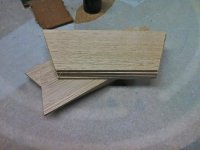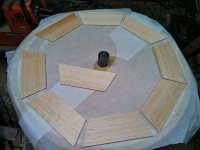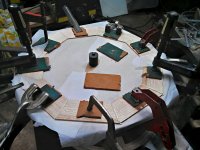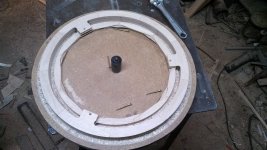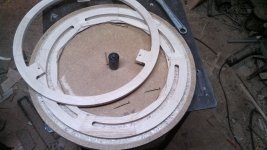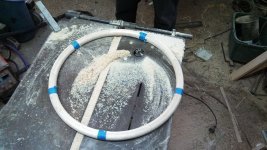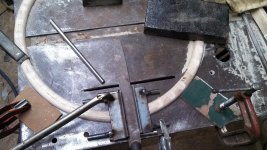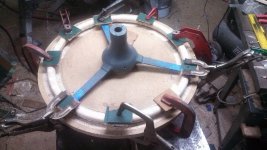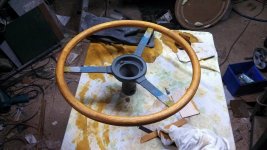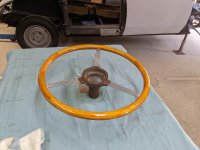Some time ago I built a new steering wheel which was a direct copy of an original but alas, I don't like the feel of it. The diameter was too big and the rim of the wheel was too chunky and doesn't feel very good in the hands. I set-out to modify the timber pattern I'd made previously and have another lash. Over the next couple of weeks I will get it finished and show the steps along the way for those who might be interested.
The timber (MDF) pattern was knocked up so a 2-part plaster mould can be made and a steel skeleton installed in the mould cavity. I'll need to wait for a week or so before I continue so the plaster can dry out, else it will react with the epoxy resin. In the mean time here are some images for your perusal..TBC





The timber (MDF) pattern was knocked up so a 2-part plaster mould can be made and a steel skeleton installed in the mould cavity. I'll need to wait for a week or so before I continue so the plaster can dry out, else it will react with the epoxy resin. In the mean time here are some images for your perusal..TBC

